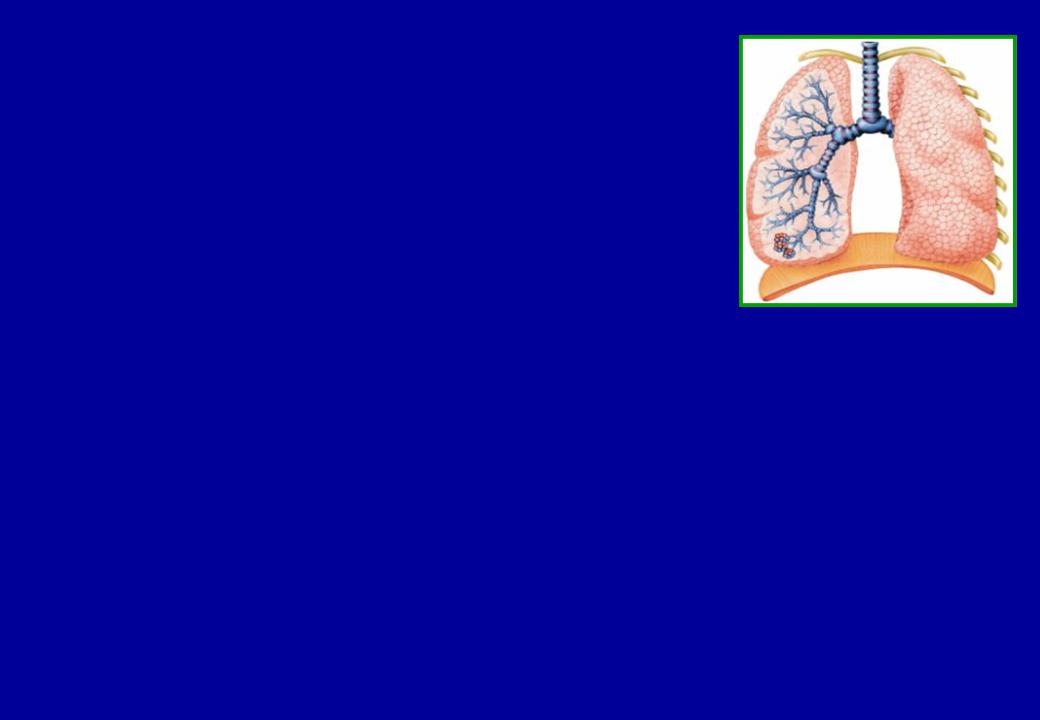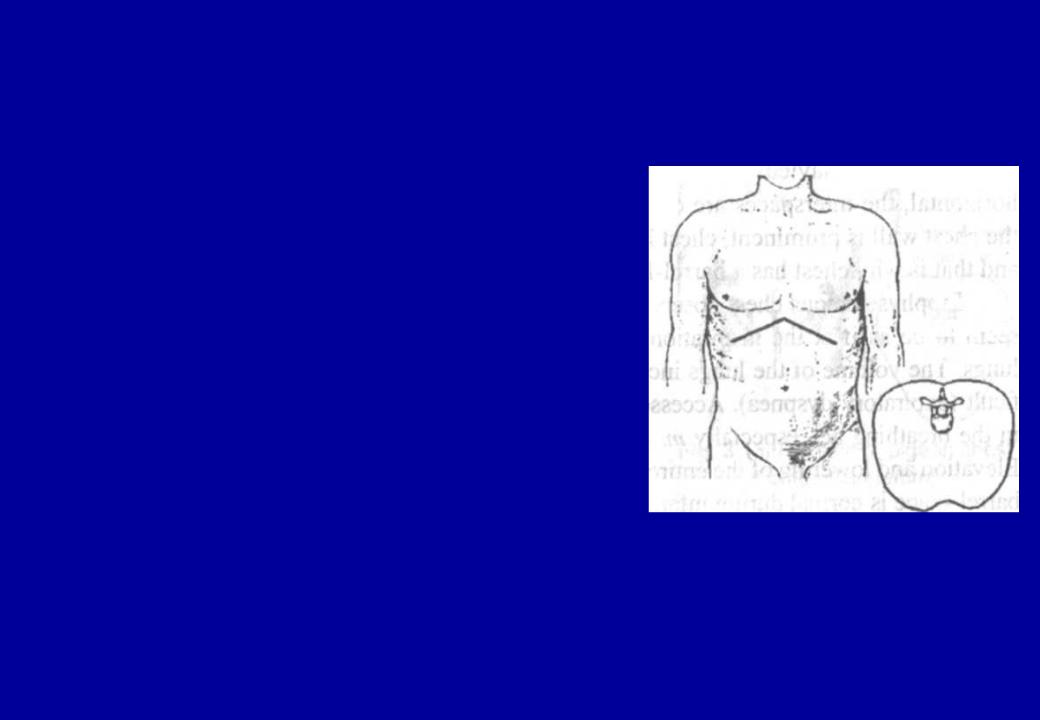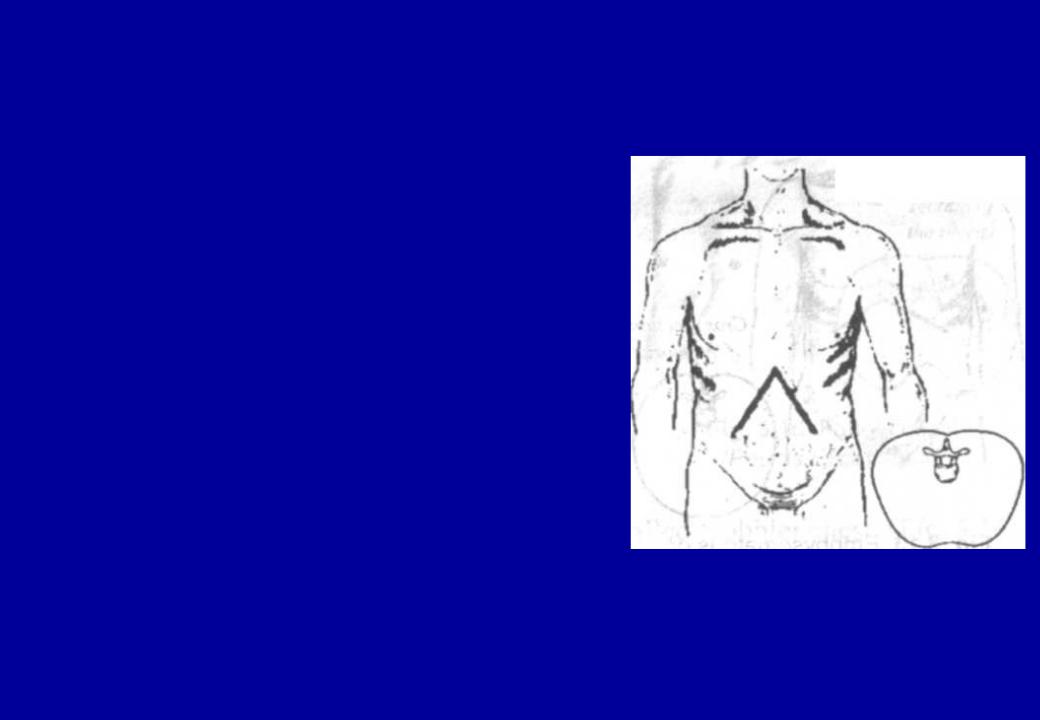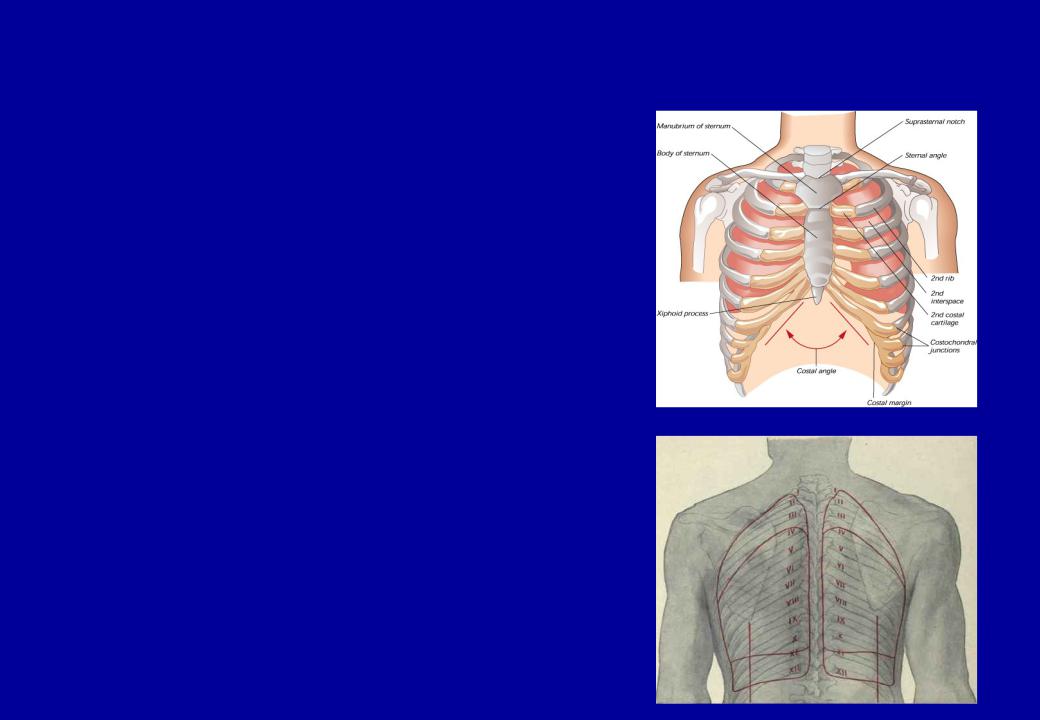
- •Physical examination of the respiratory system
- •Inspection of the chest (inspectio thoracis)
- •Static inspection
- •Normosthenic chest:
- •Hyperstenic chest
- •Asthenic chest
- •The shapes of the chest (cross - section and appearance) а,б – thorax
- •Dynamic inspection
- •Palpation
- •Topographic regions of the chest
- •Assessment of thorax elasticity ; а – antero-posterior, б – lateral.
- •TACTILE VOCAL FREMITUS:
- •TACTILE VOCAL FREMITUS:
- •Increased TVF
- •Palpation of the chest
- •Palpation of the chest
- •(Jean Nicholas Corvisart, 1755-1821)
- •Topographic regions and lines of the chest
- •Topographic regions and lines of the chest
- •Topographic regions and lines of the chest
- •Percussion
- •Use a two quick, sharp wrist motion
- •Percussion of the chest
- •Comparative percussion
- •Comparative percussion
- •The main symptoms based on comparative percussion
- •The main symptoms based on topographic percussion
- •Topographic percussion
- •Topographic percussion
- •Topographic percussion
- •4.Active and passive mobility of the lungs
- •Determining of the mobility of lower borders of the lungs
- •Active and passive mobility of the lungs

Physical examination of the respiratory system
Palpation of the chest Percussion of the lungs

Inspection of the chest (inspectio thoracis)
This is the objective method of examination based on visual evaluation of condition and pathological changes in thorax
Static inspection – based on revelation of thorax features without taking into the act of breathing
Dynamic inspection - based on revelation of thorax features with taking into the act of breathing

Static inspection
Physiological shapes :
Normosthenic,
Hypersthenic,
Asthenic
The asymmetry of the chest (enlarged volume of the half of the chest, decreased volume of the one part of the chest)
Pathological shapes :
emphysematous (barrel)
paralytic
rachitic or pigeon
funnel
foveated
scoliotic
kyphotic
kyphoscoliotic

Normosthenic chest:
The shoulders are under the right angle to the neck
Supra- and infraclavicular fossae feebly expressed
The ribs are moderately inclined
The interspaces are visible, but moderate expressed
Epigastric angle is near 90 degree
The lateral diameter is larger than anteroposterior
Scapulae closely fits to the chest and are on the same level

Hyperstenic chest
The shoulders are wide and the neck is short
Supra- and infraclavicular fossae are absent (level with the chest)
Direction of the ribs are nearly horizontal
The interspaces are narow and slightly expressed
Epigastric angle exceeds 90 degree
The lateral diameter is about the same as anteroposterior
The chest has form of a cylinder
Scapulae closely fit to the chest

Asthenic chest
The shoulders are sloping and are under the dull angle to the neck
Clavicles are well visible
Supra- and infraclavicular fossae are distinctly pronounced
The ribs more vertical, direct downward
The interspaces are wide and pronounced
Epigastric angle is less than 90 degree
Both lateral and anteroposterior diameter are smaller than normal

The shapes of the chest (cross - section and appearance) а,б – thorax of healthy adult; в,г – barrel thorax.
д,е – funnel thorax; ж,з – rachitic thorax.

Dynamic inspection
Participation of the accessory muscles in act of breathing
(bronchial asthma, respiratory insufficiency or heart failure)
Participation parts of the chest in breathing act
(pleuritis, pleural commissure, complications after surgical operations on the lung, lung tumors)
Type of respiration :
thoracic (costal)
abdominal (diaphragmal)
mixed
Respiration rate:
Normal at rest 16-20 per 1 min.
Frequent (more than 20 per 1 min.) – tachypnoë
Slow (less than 16 per 1 min.)
– bradypnoë
Respiration depth:
moderate
deep
superficial
Respiration rhythm:
regular, irregular

Palpation
This is the objective method of examination based on evaluation of condition and pathological changes in thorax during its feelings
Identification of tender areas (widespread or local, in Valle points )
Thorax resistance (normal, increased, decreased)
Tactile vocal fremitus (normal, increased, decreased)
Chest expansion (in addition to inspection) Assessment of epigastrical angle (in addition to

Topographic regions of the chest
Supraclavicular region
–above clavicles
Infraclavicular region
–below clavicles
Suprascapular regoin
–above scapulae
Interscapular region – between the scapulae
Infrascapular region – below scapular
